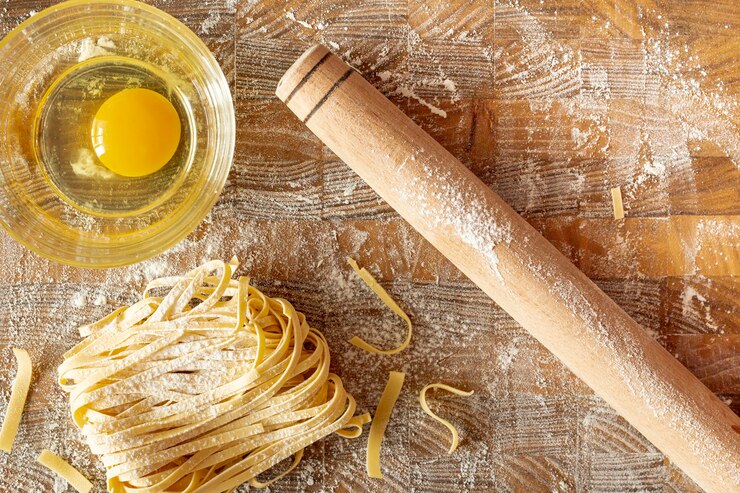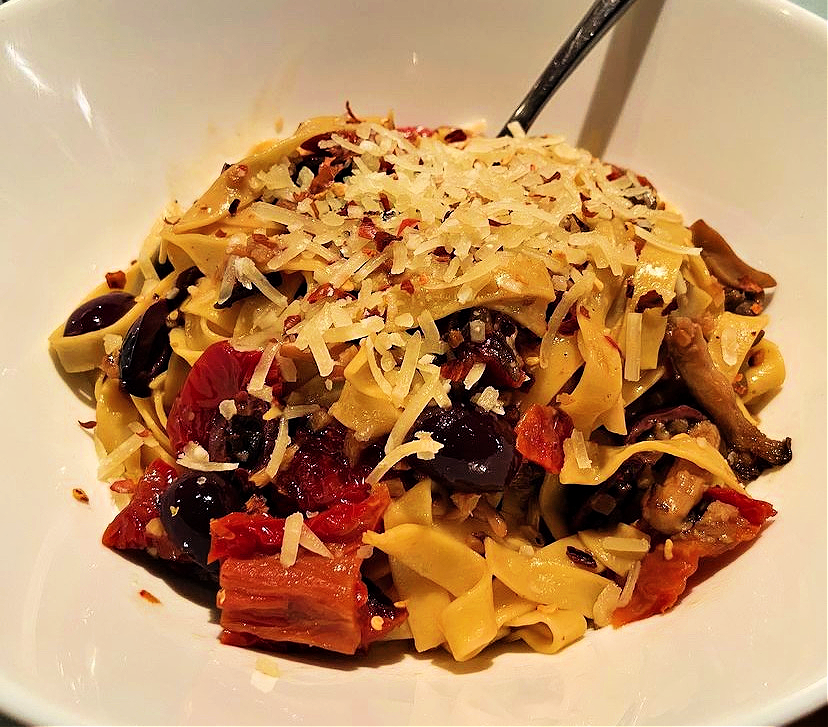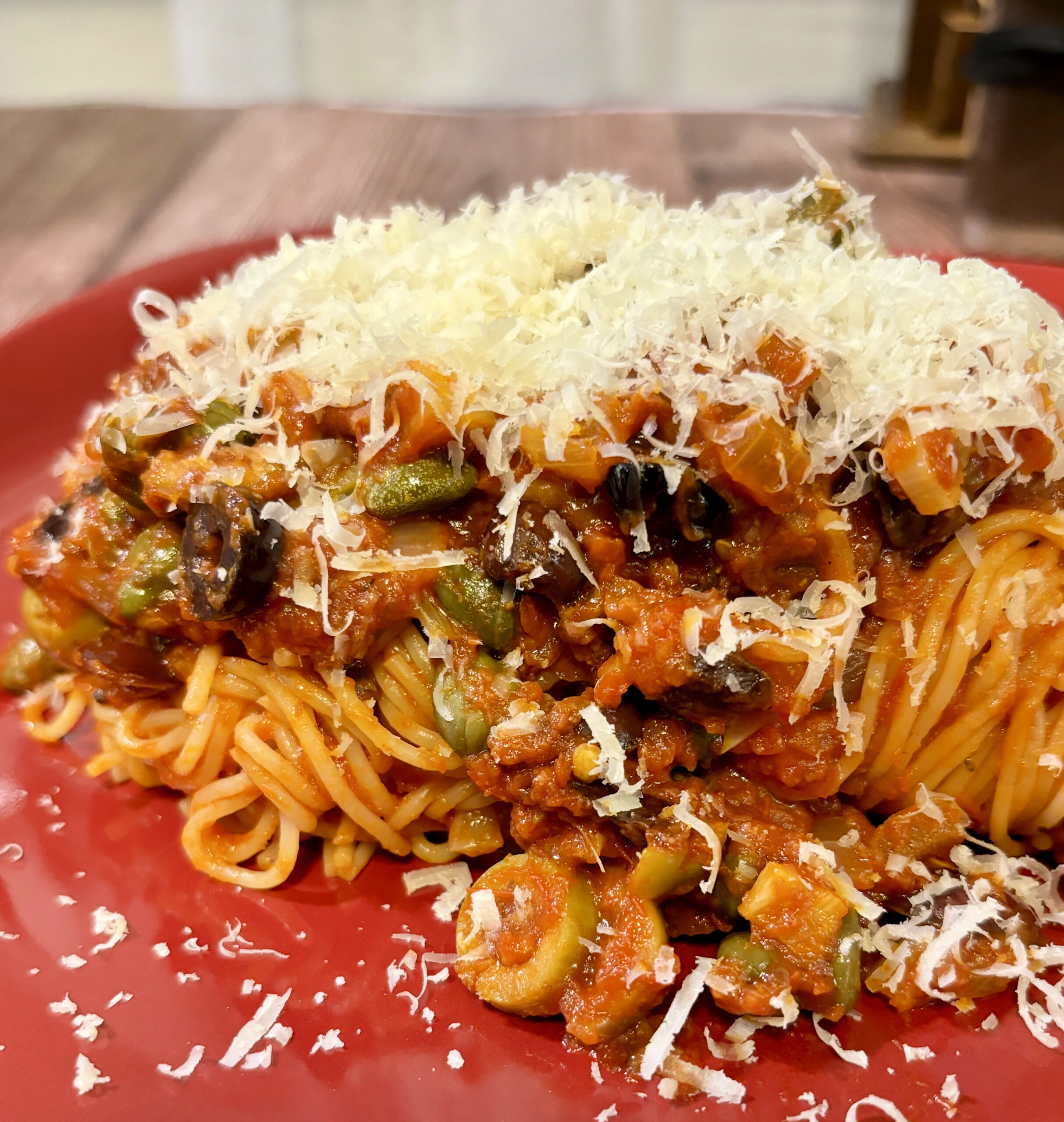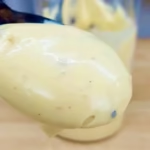
Homemade Pasta
Making homemade pasta is a fun and rewarding experience. Start by mixing flour and eggs to create a simple dough. From there, you can shape it into classic forms like lasagna or get creative with stuffed varieties like ravioli and manicotti, filled with your favourite cheeses, meats or veggies. You can even experiment with fun shapes like bowties! Boil until tender, then top with your favorite sauce for a delicious homemade meal.
Equipment
- Pasta Roller / Press
Ingredients
- 2 cups all-purpose flour plus more for dusting
- 2 whole large eggs
- 4 yolks from 4 large eggs
- Salt for boiling water
Instructions
Making the Dough
- On a clean work surface, mound the flour and make a well in the center about 4 inches wide.
- Add the whole eggs, and egg yolks to the center of the well.
- Beat thoroughly with a fork, gradually incorporating the flour until a wet, sticky dough forms. (Use a bench knife to scrape excess dough from the fork and fingers.)
- Fold additional flour into the dough with the bench knife, until it feels firm, and dry enough to form a ball.
- Press the heel of your hand into the dough ball, pushing forward and down. Rotating the ball 45 degrees and repeating until the dough becomes smooth, elastic, and similar to a firm ball of Play-Doh. (Adjust with flour or water as needed.)
- Wrap the dough tightly in plastic wrap and let it rest on the countertop for 30 minutes.
Rolling Pasta
- Place a sheet of parchment paper on a tray or cutting board, lightly dust with flour.
- Unwrap the rested dough and cut into quarters.
- Flatten one quarter into an oblong shape about 1/2 inch thick with a rolling pin.
- Set the pasta roller to the widest setting and pass the dough through 3 times at this setting.
- Fold both ends of the dough to meet at the center, then fold the dough in half and pass through the rollers 3 more times.
- Narrow the setting by 1 notch and repeat the rolling process. Continue reducing the thickness until the desired thickness is reached, making sure the dough is elastic, and slightly translucent.
- Place the rolled dough on a floured surface or parchment-lined baking sheet and cover with plastic wrap or a kitchen towel.
- Repeat steps with the remaining dough pieces.
Cutting Noodles
- Adjust the pasta machine to your desired noodle setting.
- Feed one dough segment at a time through the pasta cutter or cut by hand with a knife.
- Divide the cut noodles into portions, dust lightly with flour, (curl into nests if making shapes like spaghetti, capellini, fettuccine etc.)
- Store on a parchment-lined baking sheet until ready to cook or freeze. (see notes)
Cook & Enjoy
- Bring a large pot of salted water (salted like the ocean) to a boil. Add the pasta, stir gently, and cook until just set with a definite bite (about 2-4 minutes).
- Serve the homemade pasta with your favourite sauce & enjoy!
Notes
Making Fresh Pasta
- Flavour Variations: Experiment by adding herbs or spices, such as basil, spinach, or saffron, to your pasta dough for unique flavours. Add these directly when mixing.
- Pasta Noodle Shapes: Get creative with shapes! Try making ravioli, pappardelle, fettuccine, or even fun shapes like farfalle (bow ties) and orecchiette. Don’t be afraid to experiment.
- Refrigerating Fresh Pasta: Store fresh pasta in an airtight container in the fridge for up to 1 day. After this, it may turn greenish-grey due to oxidation (this doesn’t affect the taste).
- Freezing Fresh Pasta Dough: Wrap the dough tightly in plastic wrap and store it in an airtight container or freezer bag. It can stay fresh for up to 1 month. Thaw overnight in the refrigerator before using.
- Freezing Fresh Pasta Noodles: Toss noodles with flour to prevent sticking. Dry them in a single layer for about 1 hour, then freeze them in a freezer-safe bag or container. Frozen noodles last up to 8 months and can be cooked directly from frozen in boiling water.
- Freezing Tip: If freezing large batches of homemade pasta, consider portioning the noodles out before freezing so you can cook only what you need.
- Toss the Pasta with Flour: Lightly coat pasta strands with semolina or all-purpose flour to prevent sticking.
- Lay Out the Pasta: Arrange the coated pasta in a single layer on a baking sheet or pasta drying rack.
- Avoid Direct Sunlight: Store the pasta in an unheated oven or on the counter, but out of direct sunlight.
- Test for Readiness: Let the pasta dry for 12-24 hours. When it’s done, it should snap when bent, not twist.
- Storing Dried Pasta: Properly dried pasta can be stored in the pantry for up to 6 months.
Tried this recipe?
 Mention @thewifewiththeknife or tag #wifewiththeknife
Mention @thewifewiththeknife or tag #wifewiththeknife








